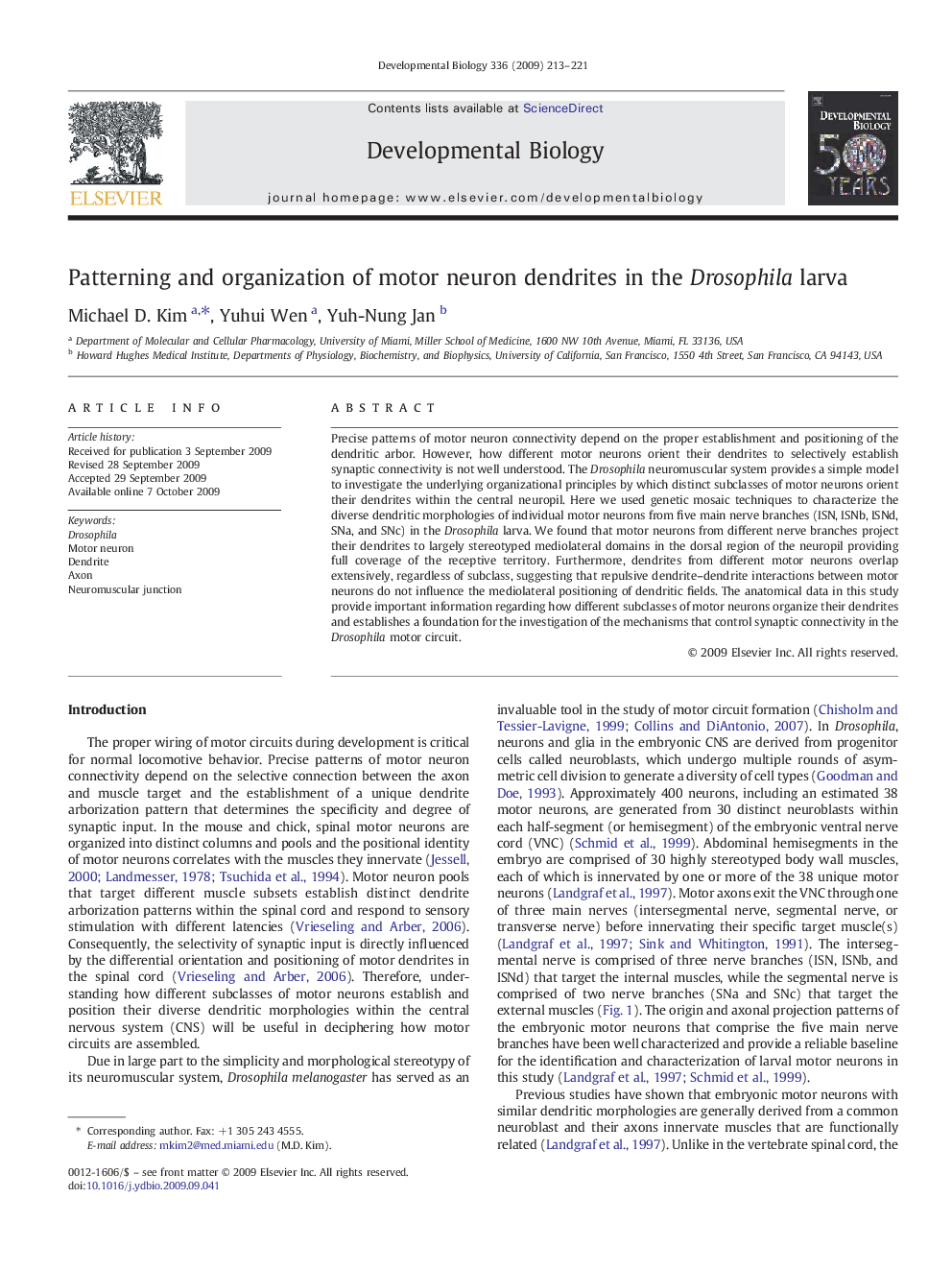| Article ID | Journal | Published Year | Pages | File Type |
|---|---|---|---|---|
| 10933212 | Developmental Biology | 2009 | 9 Pages |
Abstract
Precise patterns of motor neuron connectivity depend on the proper establishment and positioning of the dendritic arbor. However, how different motor neurons orient their dendrites to selectively establish synaptic connectivity is not well understood. The Drosophila neuromuscular system provides a simple model to investigate the underlying organizational principles by which distinct subclasses of motor neurons orient their dendrites within the central neuropil. Here we used genetic mosaic techniques to characterize the diverse dendritic morphologies of individual motor neurons from five main nerve branches (ISN, ISNb, ISNd, SNa, and SNc) in the Drosophila larva. We found that motor neurons from different nerve branches project their dendrites to largely stereotyped mediolateral domains in the dorsal region of the neuropil providing full coverage of the receptive territory. Furthermore, dendrites from different motor neurons overlap extensively, regardless of subclass, suggesting that repulsive dendrite-dendrite interactions between motor neurons do not influence the mediolateral positioning of dendritic fields. The anatomical data in this study provide important information regarding how different subclasses of motor neurons organize their dendrites and establishes a foundation for the investigation of the mechanisms that control synaptic connectivity in the Drosophila motor circuit.
Related Topics
Life Sciences
Biochemistry, Genetics and Molecular Biology
Cell Biology
Authors
Michael D. Kim, Yuhui Wen, Yuh-Nung Jan,
